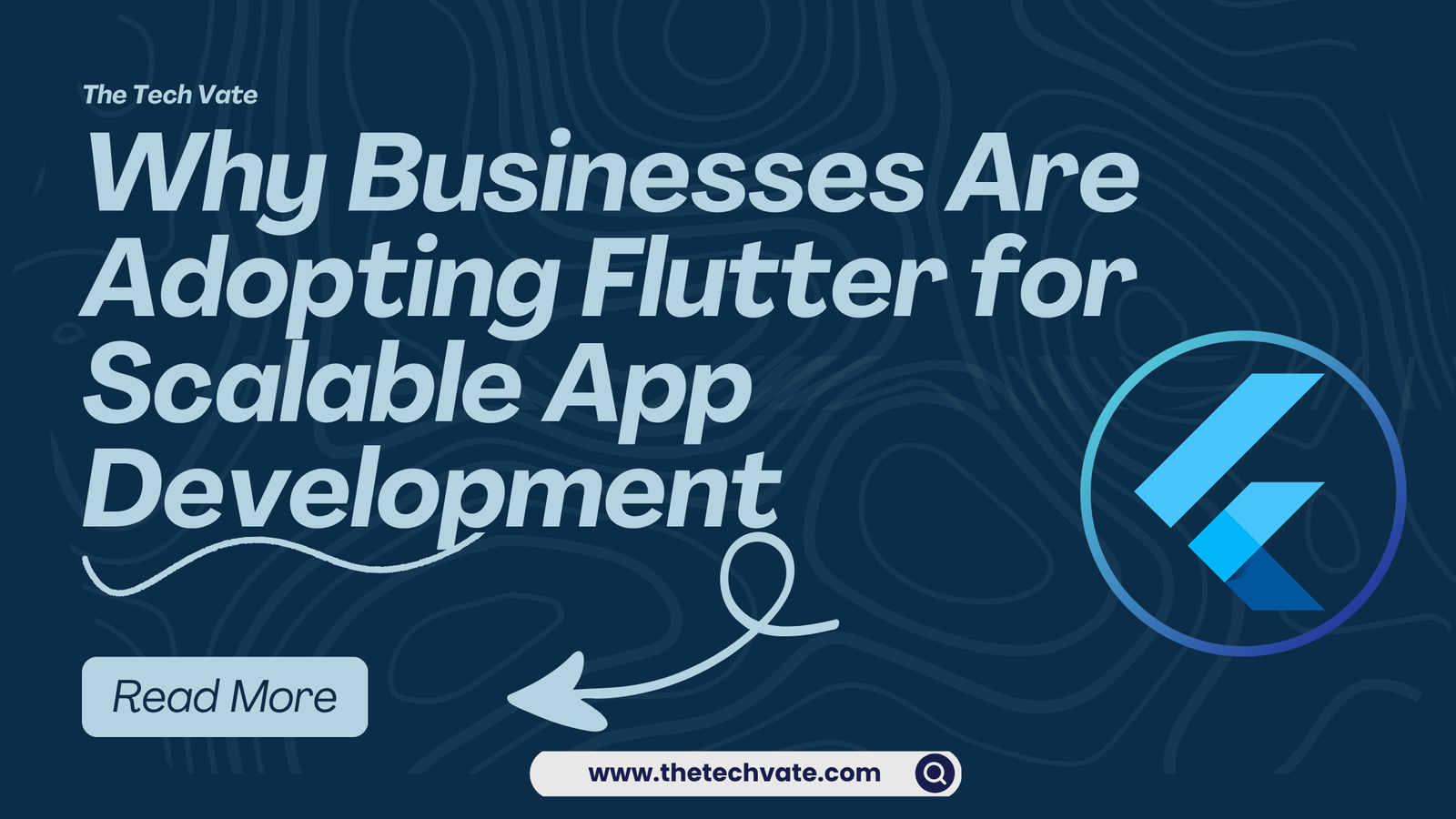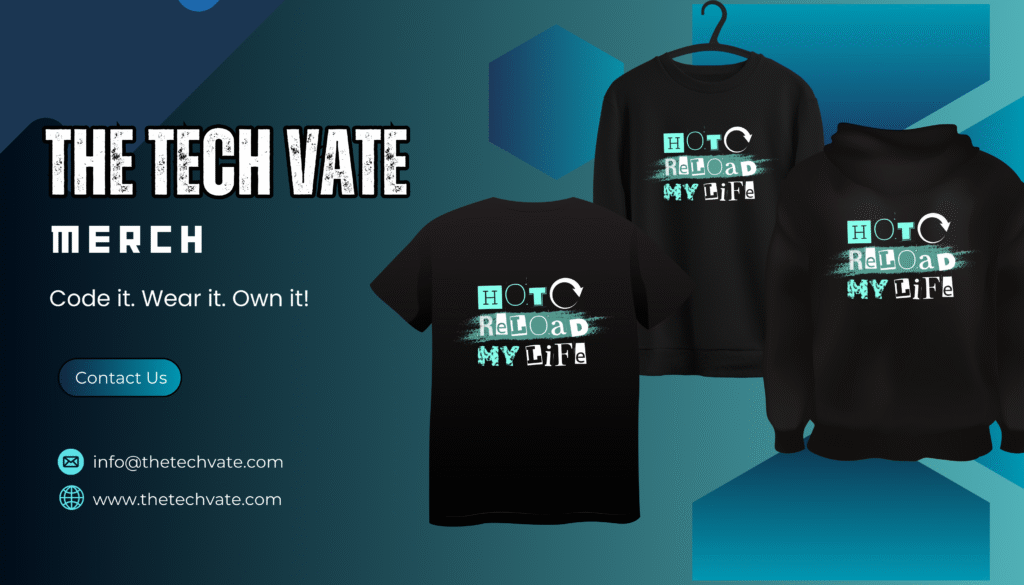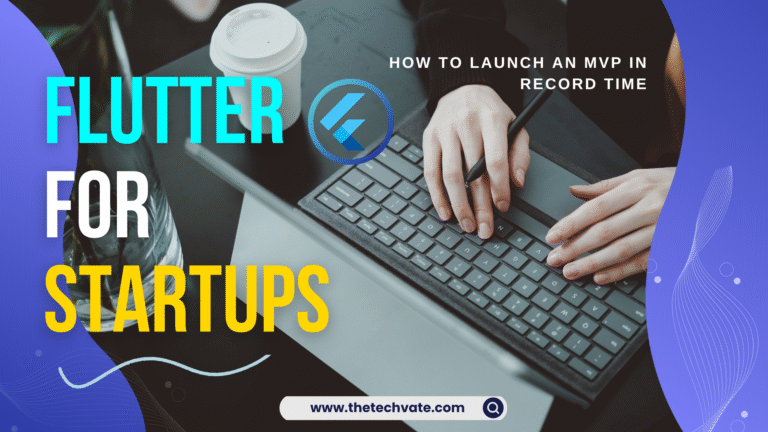Why Businesses Are Adopting Flutter for Scalable App Development
– or, how Google’s shiny UI toolkit became every CEO’s new crush.
Chapter 1: Picture This – The Modern Business Dilemma
Imagine you’re the CEO of a new startup called Snackify, an app that delivers snacks faster than your mom can say, “Eat something first.”
You’ve got big dreams, angel investors breathing down your neck, and one very real problem:
“We need an Android app, an iOS app, and maybe a web version… yesterday.”
You turn to your dev team, and they tell you the hard truth —
“Sir, building for both Android and iOS will take… well, two teams, two codebases, two timelines, and probably two mental breakdowns.”
Welcome to the classic mobile app nightmare: double the work, double the cost, double the bugs.
And this is where Flutter walks in — cape fluttering in the wind (pun fully intended).
Chapter 2: Enter Flutter – The One Codebase to Rule Them All
Flutter is Google’s open-source UI framework that lets developers build natively compiled apps for mobile, web, desktop, and embedded devices — all from a single codebase.
Think of it like Netflix for developers — one subscription (Dart + Flutter), infinite screens.
Flutter’s tagline might as well be:
“Write once, impress everywhere.”
So instead of maintaining two separate teams (Android and iOS), businesses can now have one unified team – working faster, spending less, and shipping sooner.
That alone is enough to make a CFO cry happy tears.
Chapter 3: Time-to-Market – The Real Race
In business, speed wins.
You can have the best idea in the world, but if your competitor ships first, congratulations – they just became “the Uber of your industry,” and you’re the guy with a PowerPoint pitch deck.
Flutter’s superpower? Rapid development.
Thanks to:
Hot reload: Change code → see results instantly → no app restart.
Single codebase: Write once, deploy everywhere.
Widget-based UI: Build complex UIs faster than your intern can Google “how to center a div.”
This means what used to take months now takes weeks — and what used to cost hundreds of thousands can often be done at a fraction of that.
Startups love Flutter because it lets them launch early, test quickly, and iterate faster — like having a Formula 1 car in a go-kart race.
Chapter 4: Cost Efficiency – The CFO’s Love Story
Let’s be honest – most tech decisions don’t start with developers. They start with spreadsheet people.
The moment someone in a suit hears,
“We can build for both Android and iOS with one team instead of two,”
…you can practically hear the sound of calculators lighting up across the room.
Flutter’s single codebase approach cuts:
Development time
Maintenance costs
Bug duplication
And yes, the number of developers required
That’s not a bug — that’s budget optimization.
Example:
Traditional route:
Android team = 3 devs
iOS team = 3 devs
Backend team = 2 devs
QA team = 2 devs
Total = 10 salaries, 2 tech stacks, and infinite Slack confusion.
Flutter route:
Flutter team = 4 devs (cross-platform heroes)
Backend team = 2 devs
QA team = 1 dev (since less duplication)
Total = 7 salaries, 1 codebase, 1 happy accountant.
When you scale that over time — say, updates, new features, bug fixes — the savings compound faster than crypto hype in 2021.
Chapter 5: Performance – Because Nobody Likes Lag
Now, some skeptics might say,
“Sure, cross-platform frameworks save time, but aren’t they slower?”
That used to be true… until Flutter entered the chat.
Unlike frameworks that use a “bridge” (like React Native talking to native components), Flutter talks directly to the GPU through its rendering engine – Skia (and now Impeller, its newer super-smooth successor).
What does that mean?
60 FPS animations that don’t jitter.
Consistent performance across Android and iOS.
Native-level speed, without native-level headaches.
So while some apps are busy loading, Flutter apps are already winking at users with smooth onboarding animations.
Chapter 6: Flutter’s Secret Ingredient – The Rendering Engine
This deserves a quick nerd detour.
Flutter doesn’t borrow UI components from Android or iOS. It paints its own pixels on the screen – all by itself.
It’s like saying,
“Don’t bother lending me your brushes. I brought my own art studio.”
That independence gives businesses total control over their UI and branding.
You want your app to look exactly the same on every platform?
Flutter’s got you.
No “Android looks like this, iOS looks like that” nonsense. Just beautiful, consistent interfaces – everywhere.
For brand-heavy businesses, that’s gold. It means your app feels the same, whether your user’s on a Samsung, an iPhone, or a potato with a touchscreen.
Chapter 7: Scalability – From Startup to Enterprise
Let’s say Snackify (our fictional snack empire) starts small – a few local shops, a handful of users, maybe some late-night coders ordering chips.
But then it goes viral. Suddenly you’re expanding across countries, managing real-time orders, adding new features weekly.
Can Flutter handle that?
Short answer: Absolutely.
Long answer: Flutter’s modular architecture, combined with Dart’s strong typing and reactive UI updates, makes it perfect for scaling.
You can start with a tiny MVP (Minimum Viable Product) and grow into a full-fledged platform without throwing everything away.
Big names like:
Alibaba
eBay Motors
BMW
Toyota
Google Pay
are already using Flutter for apps that handle millions of users.
So yeah- it scales. Big time.
Chapter 8: Maintenance – Because Bugs Never Sleep
You know what’s worse than writing buggy code?
Fixing the same bug twice – once in Android, once in iOS.
Flutter eliminates that torture.
One fix = everywhere fixed.
That means faster updates, fewer inconsistencies, and developers who still have time for coffee (or life).
Plus, Flutter’s Hot Reload isn’t just a development perk – it’s a productivity supercharger. Need to tweak your UI? No problem. Hit save. Boom – instant update.
For businesses, this means:
Faster feedback loops
Shorter release cycles
Less downtime
Happier users (and devs)
Chapter 9: Flutter for Web and Desktop – The Multi-Platform Dream
If you think Flutter’s story ends with mobile apps – oh, friend, you’re in for a treat.
Flutter now supports:
Web (yes, run your app in a browser!)
Windows, macOS, and Linux
Embedded devices (even car dashboards!)
So that same Snackify app? You can turn it into a website, a desktop admin dashboard, and even a self-ordering kiosk app – without rewriting your codebase.
That’s not cross-platform.
That’s omnipresence.
Imagine building a single app that runs everywhere your users are – it’s like cloning your app army. Businesses love that kind of scalability.
Chapter 10: Design Consistency – Because Looks Matter
Let’s admit it: users judge apps by how they feel.
And in a world where design is brand identity, Flutter’s customizability becomes a secret weapon.
With Material Design (Google’s design system) and Cupertino widgets (Apple’s design flavor), Flutter lets you create apps that look native – or not, if you prefer to go wild.
You can craft UIs that are sleek, consistent, and 100% on-brand.
No weird inconsistencies like:
“Why does this button look square on Android but round on iOS?”
“Why is my font doing yoga on the web version?”
Flutter fixes all that. Your design stays loyal. Always.
Chapter 11: Developer Happiness = Business Success
Now here’s something CEOs often underestimate: Happy developers build better apps.
Flutter makes development fun – yes, fun – which means fewer burnt-out devs, less turnover, and better products.
Ask any Flutter developer, and they’ll tell you:
“Hot reload is like black magic – but in a good way.”
It shortens feedback loops, encourages experimentation, and lets devs play with design until it feels perfect.
When your team enjoys the process, innovation happens naturally.
And that’s the real ROI (Return on Imagination).
Chapter 12: ROI That Even Accountants Smile At
Let’s break it down like a business pitch deck:
| Factor | Native Apps | Flutter Apps |
|---|---|---|
| Codebases | 2 (Android + iOS) | 1 |
| Development Time | ~200% | ~100% |
| Maintenance Cost | High | Lower |
| UI Consistency | Varies | Perfect |
| Performance | Great | Great (sometimes better) |
| Time-to-Market | Slow | Fast |
| Developer Happiness | Low | High |
| Scalability | Moderate | Excellent |
The math is simple:
Less cost + faster delivery + happier users = growth.
That’s why businesses are switching to Flutter faster than people switched to ChatGPT for homework help.
Chapter 13: The Future – Flutter Beyond Phones
Flutter’s roadmap looks… well, ambitious (in the best way).
With Google betting big on Flutter, it’s expanding into:
Wearables (smartwatches)
IoT devices
Smart TVs
Automotive dashboards
Yes, even your car might soon run Flutter. Imagine ordering snacks from your car’s infotainment system — Snackify 2.0!
This “build once, deploy anywhere” dream is slowly becoming reality, and Flutter’s at the center of it.
For businesses, that means long-term scalability without long-term risk.
Chapter 14: Real-World Success Stories
Let’s name-drop a few success stories, because who doesn’t love a good flex?
Alibaba
Built parts of its app with Flutter for faster updates and smoother experiences – handling millions of users daily.
BMW
Their My BMW app uses Flutter – because car manufacturers also want UI consistency and performance.
Google Pay
Yes, even Google uses Flutter – for a payment platform used by hundreds of millions.
eBay Motors
Flutter powers the entire app, delivering slick visuals and fast load times.
If these companies trust Flutter for scalability, that’s a pretty solid endorsement.
Chapter 15: The Flutter Mindset – Build Bold
At its core, Flutter isn’t just a technology – it’s a mindset.
A mindset that says:
“Let’s do more with less.”
“Let’s design without compromise.”
“Let’s build for everywhere, not just somewhere.”
Businesses adopting Flutter aren’t just choosing a framework – they’re choosing freedom.
Freedom from platform fragmentation.
Freedom from redundant code.
Freedom from slow innovation cycles.
And that’s why Flutter is winning hearts in boardrooms and dev rooms alike.
Chapter 16: TL;DR (Too Long; Didn’t Flutter)
If your brain’s full, here’s your snack-sized recap:
Flutter = one codebase for all platforms.
Faster development → faster launch → faster profits.
Performance that feels native (because it basically is).
Lower costs, easier maintenance, happier teams.
Scales from MVP to enterprise apps effortlessly.
Backed by Google and trusted by global brands.
So the next time your boss asks,
“Why should we use Flutter?”
Just smile and say:
“Because it saves money, time, and sanity – and still makes us look cool doing it.”
Final Thoughts
Flutter isn’t a passing trend – it’s the logical evolution of app development.
In a world that demands speed, consistency, and scalability, Flutter isn’t just checking the boxes – it’s rewriting the checklist.
So whether you’re a business owner trying to scale smart, or a developer trying to build fast, Flutter’s not just the right tool – it’s the right philosophy.
One codebase. Endless possibilities.
Now go build something beautiful – and scalable.













